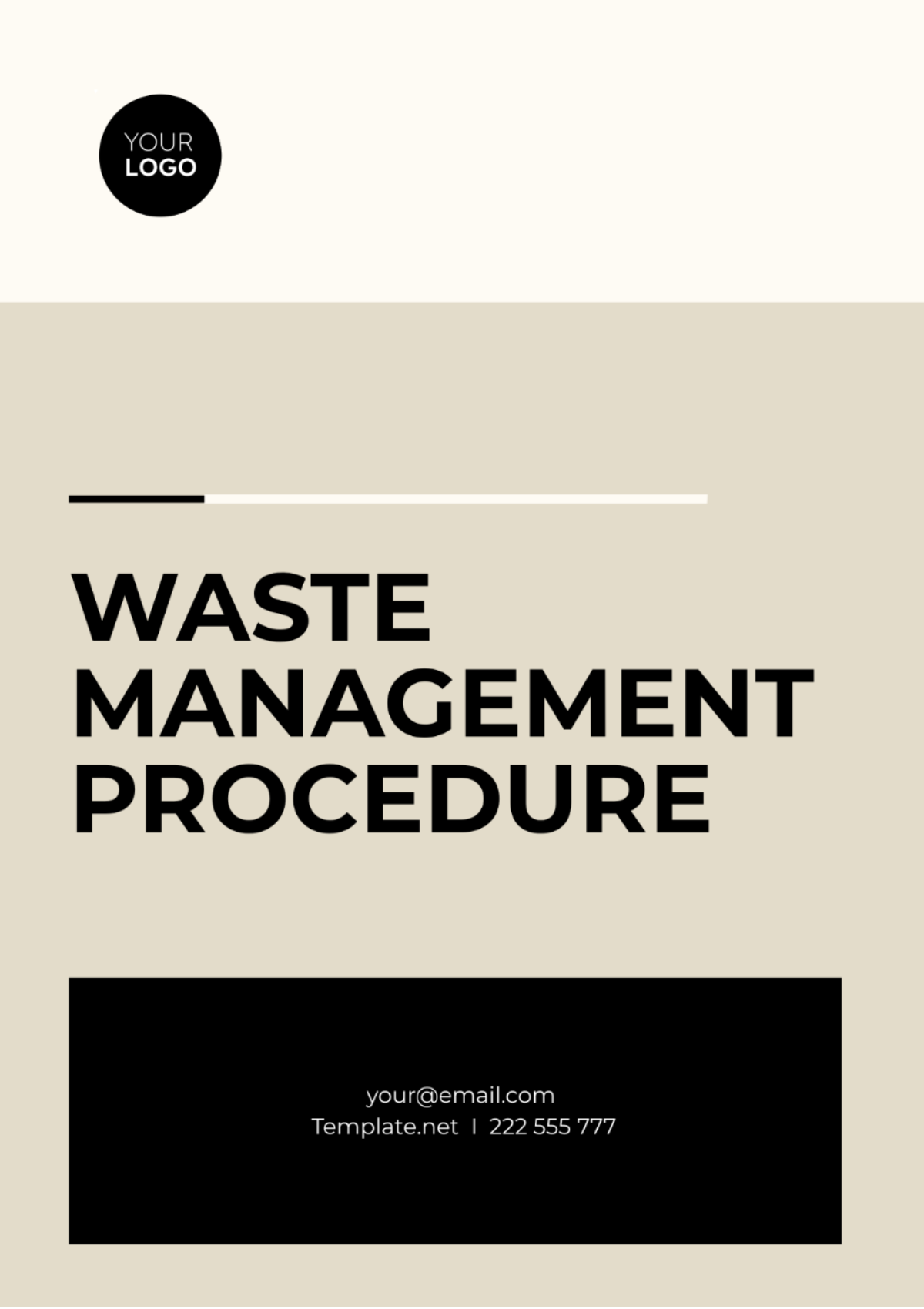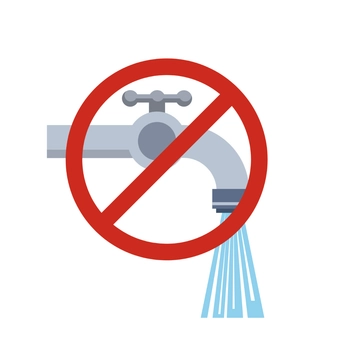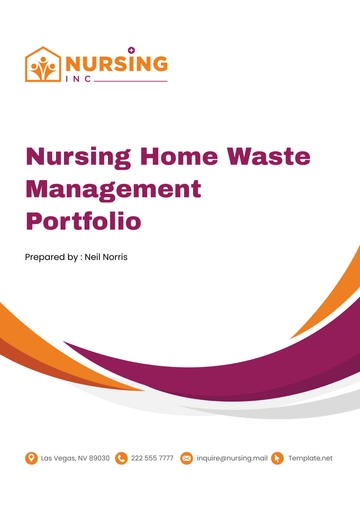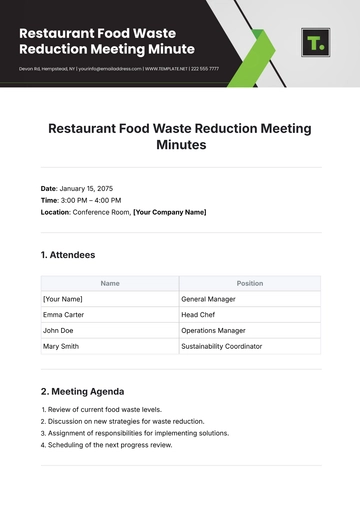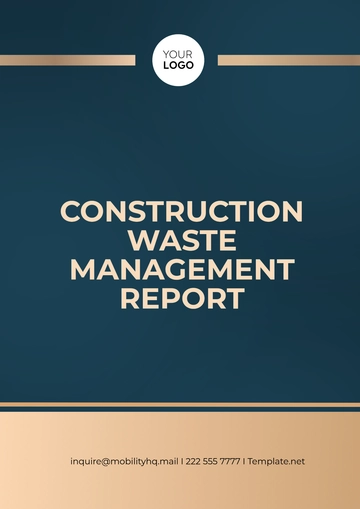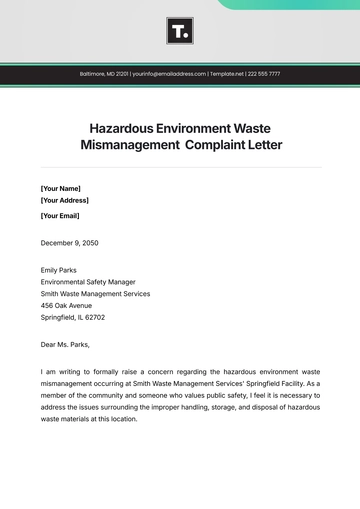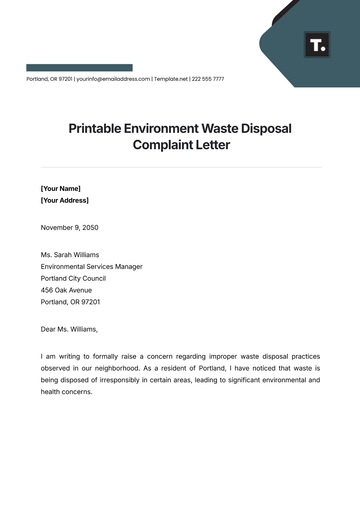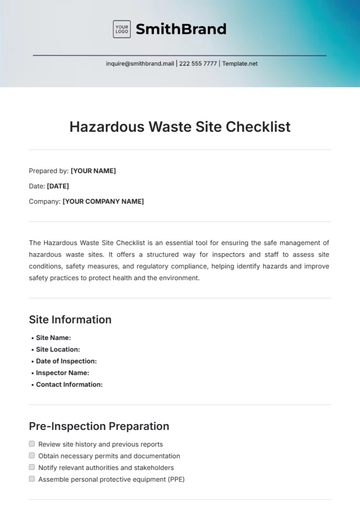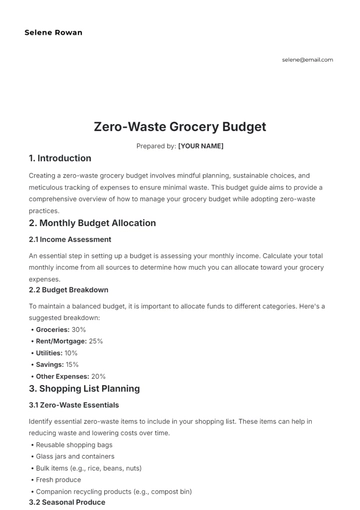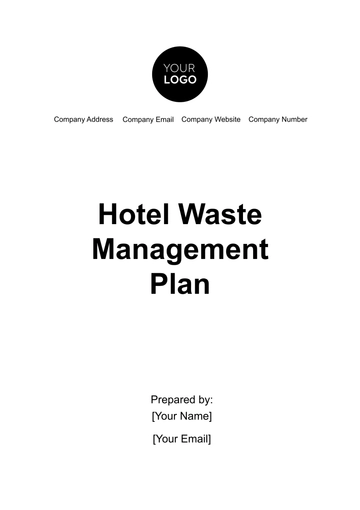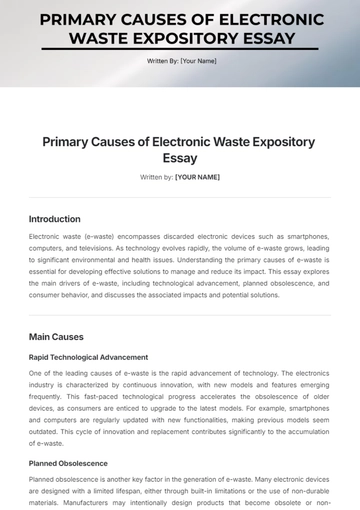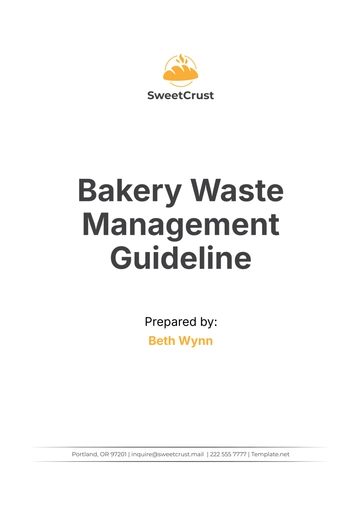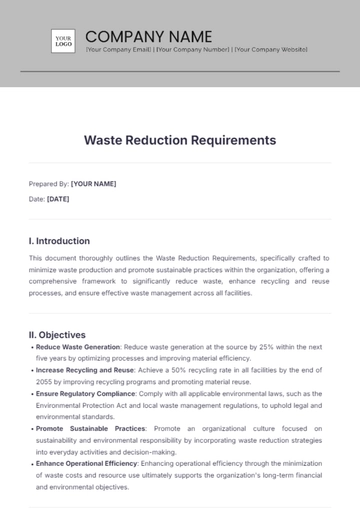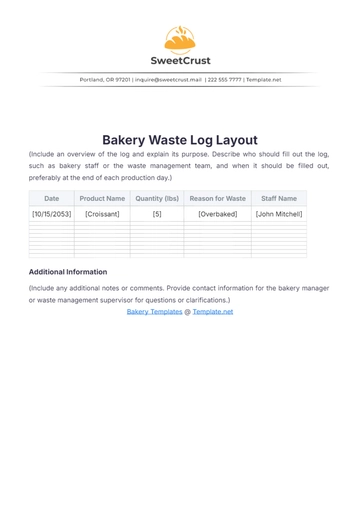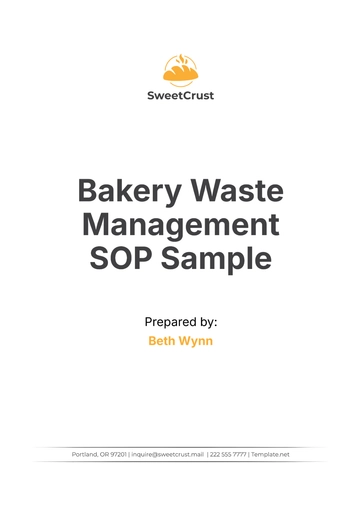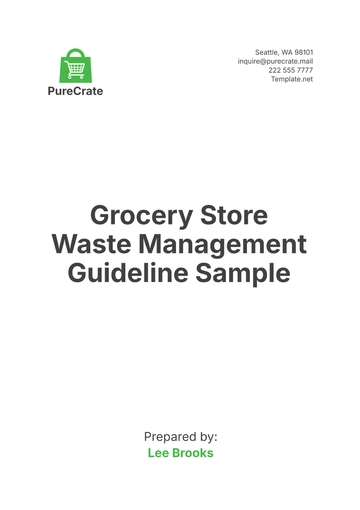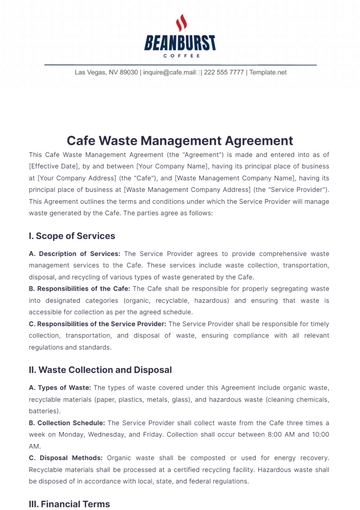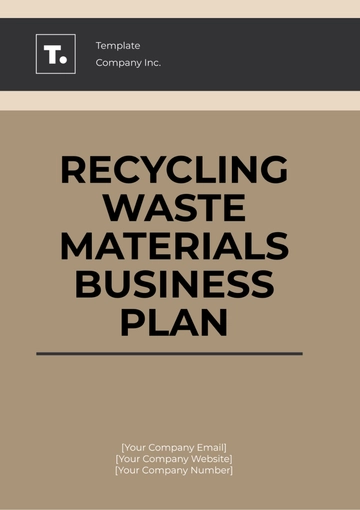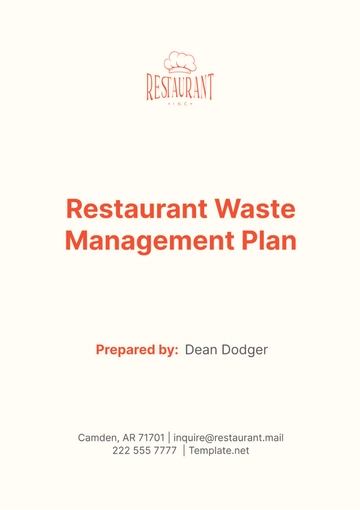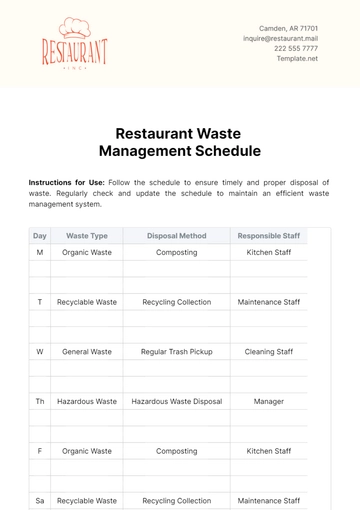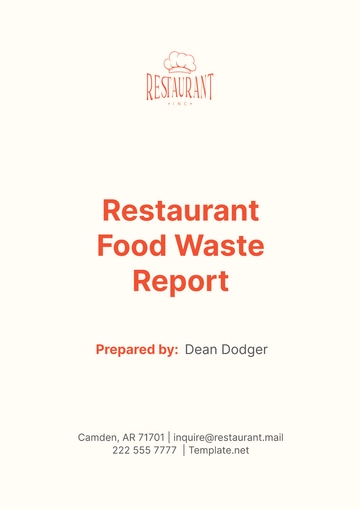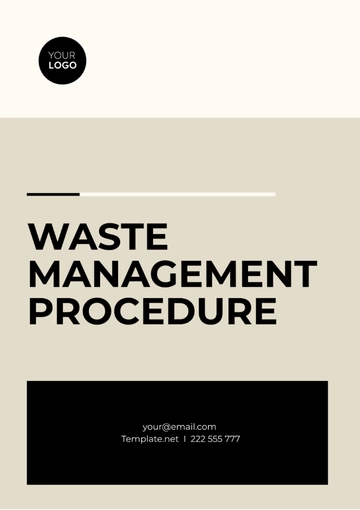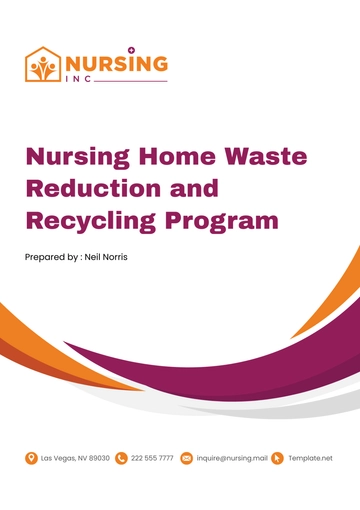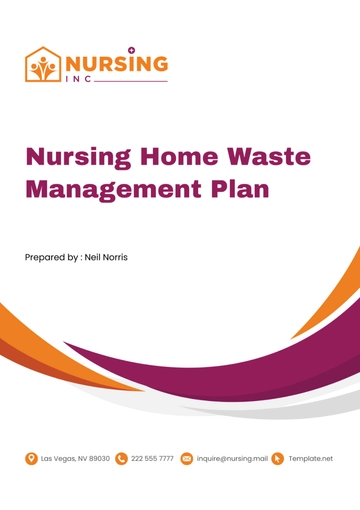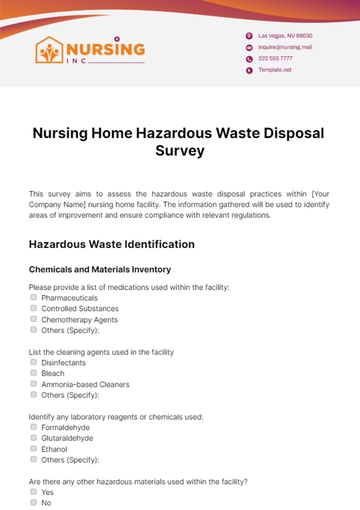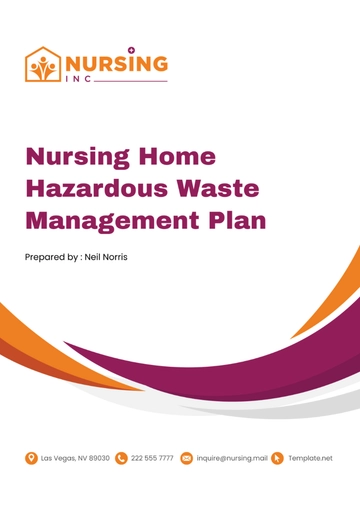Waste Management Procedure
Prepared By: | [YOUR NAME] |
Company Name: | [YOUR COMPANY NAME] |
Department: | [YOUR DEPARTMENT] |
Company Email: | [YOUR COMPANY EMAIL] |
Company Number: | [YOUR COMPANY NUMBER] |
Date: | [DATE] |
I. Purpose
The purpose of this waste management procedure is to establish guidelines for the proper handling, storage, and disposal of waste materials to ensure compliance with regulatory requirements, minimize environmental impact, and promote workplace safety.
II. Scope
This procedure applies to all employees and contractors involved in the generation, handling, storage, and disposal of waste materials within [YOUR COMPANY NAME]
III. Definitions
Waste: Any material that is no longer needed or usable and requires disposal.
Hazardous Waste: Waste that poses a substantial or potential threat to public health or the environment due to its chemical, physical, or biological characteristics.
Non-Hazardous Waste: Waste that does not pose a significant threat to public health or the environment.
Segregation: The process of separating different types of waste for proper disposal or recycling.
IV. Responsibilities
Compliance Officer: Oversee waste management compliance and ensure adherence to legal and environmental standards.
Department Heads: Implement waste management procedures within their departments.
All Employees: Follow the provided guidelines for waste disposal and recycling.
V. WASTE SEGREGATION
All waste generated within the premises of [YOUR COMPANY NAME] must be segregated at the point of generation into appropriate categories, including but not limited to:
General waste
Recyclable waste (paper, plastic, glass, metal, etc.)
Hazardous waste (chemicals, batteries, fluorescent tubes, etc.)
Segregation should be done using clearly labeled containers or bins provided for each waste category.
VI. Procedure
Waste Identification: Identify and classify waste generated by [YOUR COMPANY NAME] into recyclable, non-recyclable, and hazardous categories.
Segregation of Waste:
Waste Collection: Conduct regular waste collection schedules to manage waste accumulation.
Waste Disposal: Dispose of non-recyclable and hazardous waste through licensed waste disposal services.
Recycling: Transfer recyclable waste to designated recycling facilities.
Reporting and Documentation: Maintain accurate records of waste disposal, recycling, and any incident reports related to waste management.
VII. Supporting Documents
Document Type | Description | Location/Link |
|---|
Waste Disposal Records | Logs of all disposal activities | [FOLDER/DRIVE LINK] |
Incident Reports | Reports on any waste management incidents | [FOLDER/DRIVE LINK] |
Environmental Compliance Certificates | Certificates showing compliance with environmental regulations | [FOLDER/DRIVE LINK] |
VIII. WASTE MANAGEMENT AUDITS
A. REGULAR AUDITS
FREQUENCY: Conduct [FREQUENCY] audits of waste management practices to ensure compliance with procedures and regulations.
CHECKLISTS: Use standardized [CHECKLISTS] to assess waste segregation, storage, and disposal practices.
B. CORRECTIVE ACTIONS
IDENTIFY ISSUES: Identify any deficiencies or non-compliance during audits.
CORRECTIVE MEASURES: Implement [CORRECTIVE MEASURES] to address identified issues promptly.
IX. REPORTING
A. INCIDENT REPORTING
PROCEDURE: Establish a procedure for [PROCEDURE] any incidents or accidents related to waste management.
DOCUMENTATION: Document all incidents, including details of the event, actions taken, and outcomes.
B. PERFORMANCE REPORTING
METRICS: Define [METRICS] for waste management, such as waste diversion rates and recycling percentages.
REGULAR REPORTING: Generate [REGULAR REPORTING] reports on waste management performance to track progress and identify areas for improvement.
X. CONTINUOUS IMPROVEMENT
A. FEEDBACK MECHANISM
EMPLOYEE FEEDBACK: Encourage employees to provide [EMPLOYEE FEEDBACK] and suggestions for improving waste management practices.
MANAGEMENT REVIEW: Conduct regular [MANAGEMENT REVIEW] of waste management procedures and performance to identify opportunities for enhancement.
B. TRAINING AND AWARENESS PROGRAMS
ONGOING TRAINING: Provide regular [ONGOING TRAINING] sessions on waste management best practices and updates on regulations.
AWARENESS CAMPAIGNS: Launch [AWARENESS CAMPAIGNS] to engage employees and promote active participation in waste reduction efforts.
XI. CONCLUSION
In conclusion, the effective implementation of this [WASTE MANAGEMENT PROCEDURE] is crucial for maintaining [Your Company Name]'s commitment to environmental sustainability and regulatory compliance. By adhering to the procedures outlined above, we can ensure efficient waste management practices and minimize our environmental footprint.
It is imperative that all employees familiarize themselves with this procedure and actively participate in its implementation. Continuous monitoring, evaluation, and improvement are essential to uphold the highest standards of waste management within our organization.
Procedure Templates @ Template.net
